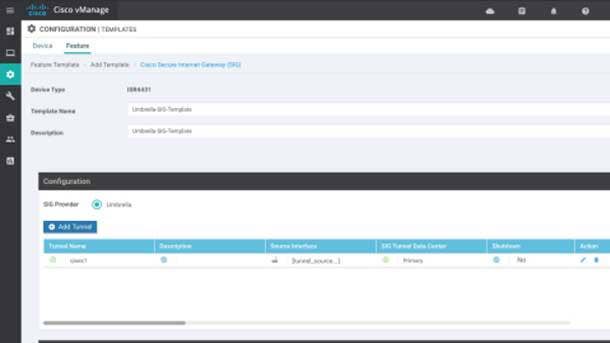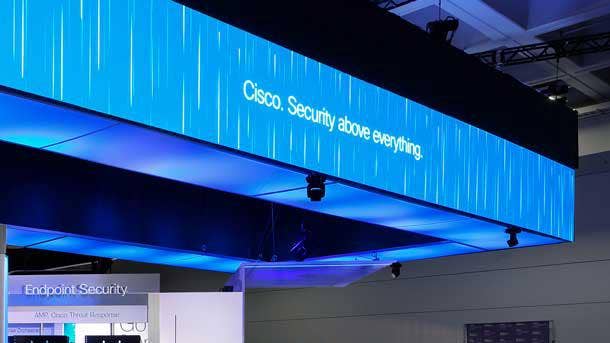Cisco CEO Chuck Robbins On Supply Chain, XaaS And The Mission To Integrate And Simplify
‘What we have seen in the partner community is a serious uptake on taking our technology and delivering managed services to the customer. I think the desire for these kinds of services from the customer is real,’ Cisco CEO Chuck Robbins told CRN about the company’s XaaS and managed services push.
Robbins Live
Cisco Systems is a company that has grown both organically and via acquisitions. As such, the networking giant has a huge portfolio of products and services that have historically been disparate. But Cisco is working to remedy that.
The company at Cisco Live 2022 unveiled a breakthrough in network management. The very popular Cisco Catalyst portfolio can now be managed via the cloud using the simple Meraki dashboard. But that’s not the only integration Cisco has been piecing together. The company’s flagship Webex collaboration offering is now feeding Cisco’s WAN Insights engine and the security portfolio is being united, according to the San Jose, Calif.-based company. It’s music to the ears of Cisco partners who are deploying these solutions but who now have a more unified networking, security and collaboration story to bring to their end customers.
Integration isn’t the only thing that has been keeping the company busy. Cisco Chair and CEO Chuck Robbins sat down with CRN at Cisco Live to talk about how the company is on “just the first step” of its unified networking story. He also discussed the macro issues that are impacting the tech industry, like supply chain constraints and how they are shaping the selling motion of channel partners. The global supply chain crisis has created a record-breaking backlog for Cisco, and the company is doing a lot of work behind the scenes to prioritize and triage the evolving situation. And speaking of selling motions, the Everything-as-a-Service (XaaS) model is gaining traction as the company released its second Cisco Plus offer earlier this month.
From the company’s simplification and integration work to supply chain and XaaS, here’s what Robbins told CRN in an exclusive interview at Cisco Live 2022.

With the announcement of Catalyst support on the Meraki platform, how big a deal is it that administrators can manage their network from a single pane of glass from the cloud?
I think it’s a significant milestone and I think it’s just the first phase. Todd [Nightingale, executive vice president and general manager of Cisco’s enterprise networking and cloud business] has done a great job with the organization of getting them here. But there’s a long list of things we’re going to do to leverage that [Meraki] dashboard and help continue to expand it, from monitoring to some level of configuration to looking at the rationalization of platforms over time. There’s a lot of things that will come as a result of it. I’m just really happy we got that out and proud of what they announced.
Partners are saying Cisco is tearing down walls to create a more unified networking story. Do you agree with that assessment?
I think that we’re bringing more offers to the market today that require integration across business units than we ever have, and this is probably a banner day for that. But there’s a lot more coming.
Look at the integrations between ThousandEyes and Talos Threat Intelligence service within AppDynamics. One of the ironic things they figured out is that Webex actually has a lot of analytics about internet performance, so now it’s feeding the [WAN Insights] engine data. Then, you have observability integration with Intersight, and [Nightingale] and Jonathan [Davidson, executive vice president and general manager, Cisco Mass-Scale Infrastructure] are working on private 5G and Wi-Fi 6 stuff together. There’s a lot of cross business unit work going on, and I think it’s a muscle that we’re going to build even more effectively as we go forward.

How is Cisco prioritizing its record-breaking backlog in the midst of a constrained supply chain?
We have a team of people that are doing this. And obviously, when the customer ordered matters. That’s the basic principle. But then you can imagine that we are working hard to prioritize first responders and those who have regulatory requirements. And a lot of those come in sort of ad hoc from customers who send us notes. I will say, though, that customers have been very conscientious about escalating for exceptions only when they need them. And in many cases, that conversation is around, ‘I need this stuff, I don’t need that—you can push it out, so don’t worry about that—but I need this stuff if you can help me.” And so, it’s actually allowed us to, in some cases, serve other customers. It’s just been complicated. It’s a daily triage for our team to try to get this done.
Do you think the supply chain crisis will accelerate the XaaS trend?
Considering that a lot of our services have hardware built into the core service, I wouldn’t say that it’s a significant accelerant because I’ve actually had some conversations where some of our challenges in getting some of these things adopted is actually still supply chain and trying to get that stuff out there. Like [for Cisco Plus] Hybrid Cloud, we went out and we allocated some equipment from our capacity to make sure we were getting those early adopters up and running so we could get the feedback because otherwise it would have taken a little longer, so I don’t think that you’re seeing an accelerant. I think [XaaS] is not immune to supply chain challenges, unfortunately. For pure SaaS offers, it’s obviously a different story.

Are partners coming along with Cisco on the XaaS business model transformation?
I think they are coming along with us. We just launched the SASE [Cisco Plus Secure Connect Now], and Cisco Plus Hybrid Cloud is still in early adoption. We have some architectural systems work that we’re doing that’ll make it a much more simple way for us to offer everything as a service. That work is being done right now and should come online in the fall, which will give us the ability to accelerate a lot of offers in this space.
What I would say, though, is one of the big things that we have seen in the partner community is a serious uptake on taking our technology and delivering managed services to the customer. I think the desire for these kinds of services from the customer is real. We launched a new [partner program role] called ‘Provider,’ which is a managed service provider program and there are almost 2,000 partners now that are delivering something. So, for me, that validates the model. And I think over time, what you’ll see is partners having a combination of their unique intellectual property baked into a managed service that they can deliver, as well as in some cases, they may deliver ours as a service to their customers as well. I think that’s where we’ll end up—probably 2023—we’ll start to see that really come together.
Customers don’t want to be systems integrators. It just takes too long. So, you create two opportunities where partners can go in and do that systems integration work more effectively and more quickly—that’s an opportunity for them. But at the end of the day, [customers] want the outcome one way or the other, buy it as a service, or buy it as an integrated, tightly wrapped solution from a partner. I think that’s where they’re building their managed service offerings as well, even if it’s just the management of on-premises capabilities. If it’s all packaged and done, I think a customer finds that more attractive because it helps them get to that outcome they’re trying to get to.
How important is it that partners wrap their own services around XaaS and Cisco managed services?
I think you’ll see us expose APIs on our own services. If you look at Meraki, that’s a great example where we deliver that as a service. But we also have partners who take that and add their own layer of capabilities on top because of the APIs we expose. So, I think you’ll see that that opportunity arise as well. But my view is to the extent you can, you want to give the partners the ability to add their intellectual property to it to differentiate their solutions.

Is your channel mix changing due to Cisco’s growing base of cloud and hyperscale business?
I think it has to anytime you start partnering with new partners, [especially] big ones. We’re doing more with the hyperscalers for sure [and] building out in the cloud marketplaces. And then, obviously looking at the managed services opportunity—we have really spent a lot of time at the leadership team level with Oliver [Tuszik, Cisco’s channel chief, pictured] around cloud marketplaces and managed services in particular, as he’s taken on this whole routes-to-market responsibility. Those are two of the big ones that we’re focused on right now. I think anytime you do that, you’ll see a big shift.
We’ve always been in the managed services space, but [Tuszik] has invested pretty significantly on service creation resources to help our partners actually think about and build plans to create those services—the marketing plans and sales plans. And it feels like customers are adopting those even at a faster pace than they used to. I would say that that particular provider will become a greater percentage. But it might still be some traditional providers who have moved into that space. It might be the same partner, but a different profile of what they look like.

Where should Cisco partners be placing their bets right now?
I think, clearly, security, which I think many of them already are. I think if you look at customers trying to re-architect their fundamental infrastructure to deal with these traffic patterns that we’re facing today, I think, ironically, partners could have a big role to play in just thinking about how you architect that. I think getting in the early phases of the observability space would be a good area for partners to start looking at, but it may not be for everybody early on, but over the next year or two, it would be one that I would definitely look at.
Then, obviously, hybrid work and really helping customers think through their strategy for hybrid work, I think that’s another big area. I also think DevNet. Grace [Francisco, vice president of Cisco developer relations strategy and experience] came in, and working for Liz [Centoni, Cisco’s chief strategy officer and general manager of applications], rearchitected our entire DevNet program. There’s now a standardized API architecture that teams are building, which gives these partners opportunities to build businesses on top of our platforms.
I have to say there’s probably more opportunity today than we’ve seen in 20 years. And I think that’s true for the partners as well.